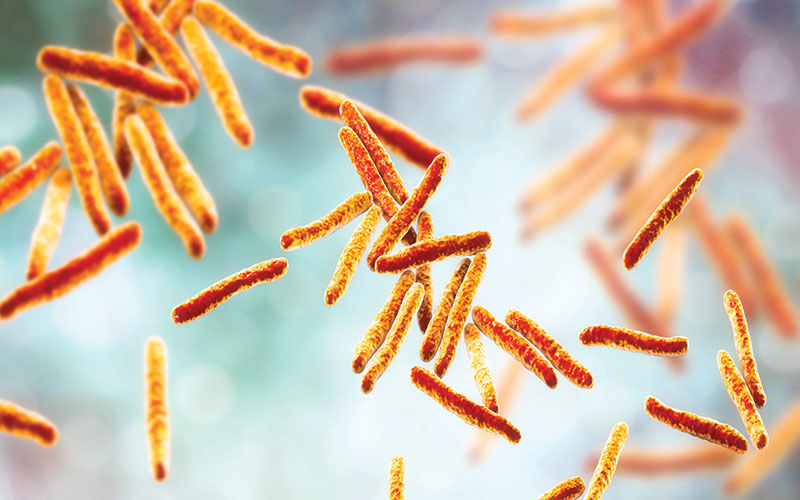During infection the main causative agent of tuberculosis, Mycobacterium tuberculosis, secretes a large number of effector proteins through type VII secretion systems.

These small nanomachines, are composed of proteins that reside in the cell envelope.
The effector proteins are specialised in fighting the immune defence or enabling the uptake of nutrients to ensure the bacterial survival in the host. How these systems work, is poorly understood.
Scientists from the Julius-Maximilians-Universität Würzburg and the Centro Nacional de Investigaciones Oncológicas have now succeeded in deciphering the molecular architecture of these nanomachines.
Over the past five years, the research group has worked intensively on the stable reconstitution of one of these secretion machines and the preparation of the sensitive sample for measurements on the cryo electron microscope.
In collaboration with the research group of Oscar Llorca in Madrid, which computed three-dimensional maps of the protein complex using a sophisticated data processing strategy, the scientists have been able to create a model of its molecular structure.
They were able to identify important elements of the nanomachine that form the transport pore, and elements that convert chemical energy into motion and drive the transport of effector proteins through the pore.
The findings of the researchers lead to a deeper functional understanding of type VII secretion systems. In times of rising resistance of mycobacteria to the antibiotics in use and no effective vaccination against tuberculosis in place, the research provides an important basis for novel antibiotic development.
Image credit | Shutterstock




